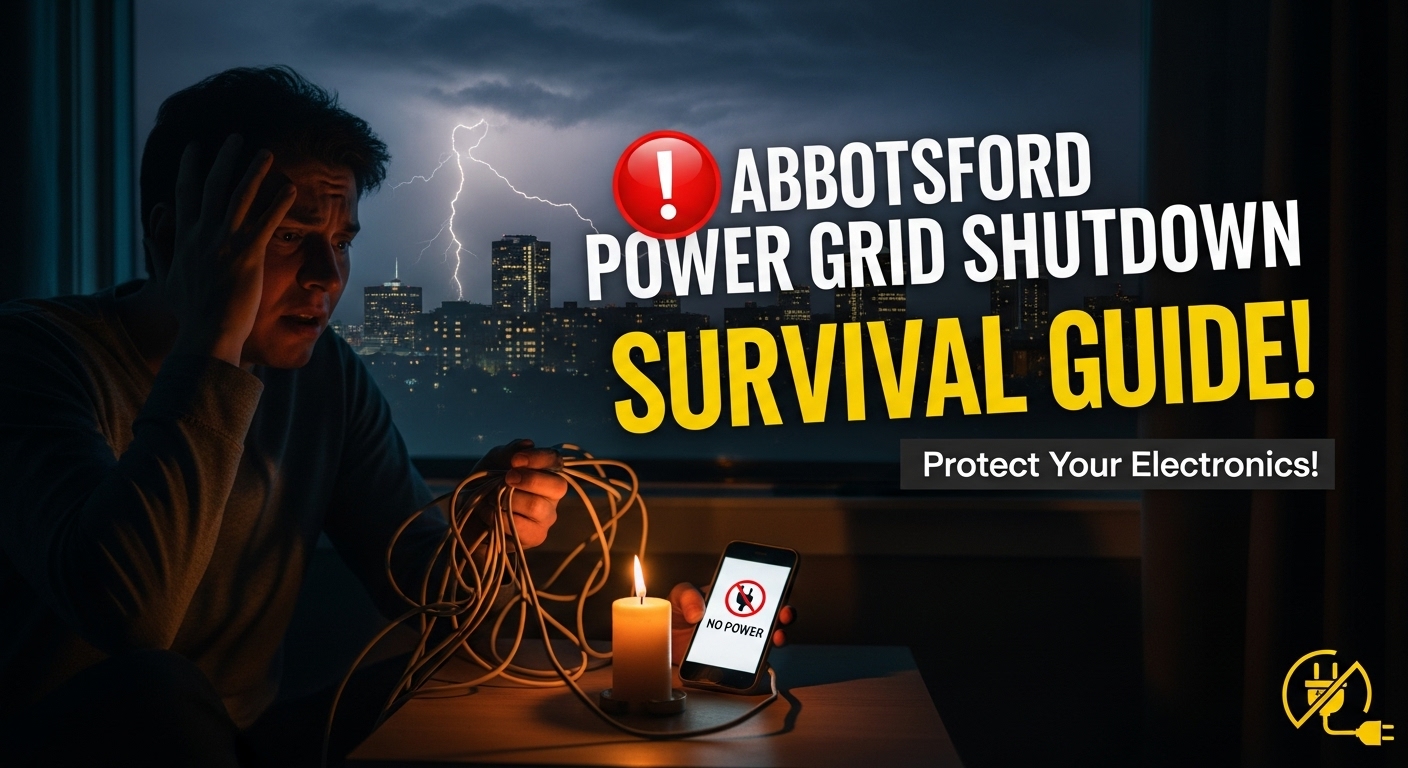Appliance Load Shedding Survival Guide: How Abbotsford Homeowners Can Protect Their Electronics During Rolling Blackouts and Power Grid Shutdowns
Wondering how to protect your valuable Abbotsford appliances from the electrical chaos that happens when power returns after rolling blackouts? The truth is, those crucial microseconds when electricity surges back through your home’s wiring pose a far greater threat to refrigerators, TVs, and smart devices than the actual outage itself – and most homeowners have no clue their expensive electronics are sitting ducks.[IMAGE PLACEHOLDER FOR IMAGE1]
Picture this: you’re chilling at home in Abbotsford, maybe streaming Netflix or prepping dinner, when suddenly the power cuts out. No big deal, right? Just another rolling blackout that’ll be over in an hour or two. But here’s what most Fraser Valley homeowners don’t realize – the real danger isn’t sitting in the dark. It’s what happens in those first few microseconds when BC Hydro flips the switch and electricity comes roaring back through your neighborhood’s power lines.
That innocent little power restoration can unleash voltage spikes that are basically electrical tsunamis, crashing through your home’s wiring and frying circuit boards faster than you can say “surge protector.” We’re talking about voltage levels that can double or triple normal operating parameters, turning your $3,000 smart refrigerator into an expensive paperweight or transforming your entertainment center into a collection of dark screens. The kicker? Most of this damage happens so fast that you won’t even see a flicker – just appliances that mysteriously stop working after the lights come back on.
With Abbotsford experiencing some of BC’s highest outage rates and BC Hydro dealing with increasingly unstable grid conditions, protecting your appliances isn’t just smart home maintenance – it’s financial survival. Between climate change driving more extreme weather, aging infrastructure, and the reality that rolling blackouts are becoming the new normal for managing grid stability, Fraser Valley homeowners need to get serious about surge protection before the next outage turns their appliance collection into an expensive repair project.
Key Outtakes:
- Abbotsford experiences approximately 3 power outages annually with average durations of 12 hours – unusually high for urban BC communities
- The greatest appliance damage occurs during power restoration, not during outages, when voltage surges can exceed 300+ volts in residential circuits
- Metal oxide varistors in surge protectors degrade with each surge event and require replacement every 3-5 years in areas with frequent load shedding
- Whole-house surge protection systems cost $300-750 installed but protect against appliance replacement costs of $1,500-3,000 per major appliance
- Smart home devices and IoT appliances face unique vulnerabilities from power fluctuations that can cause data corruption and firmware damage
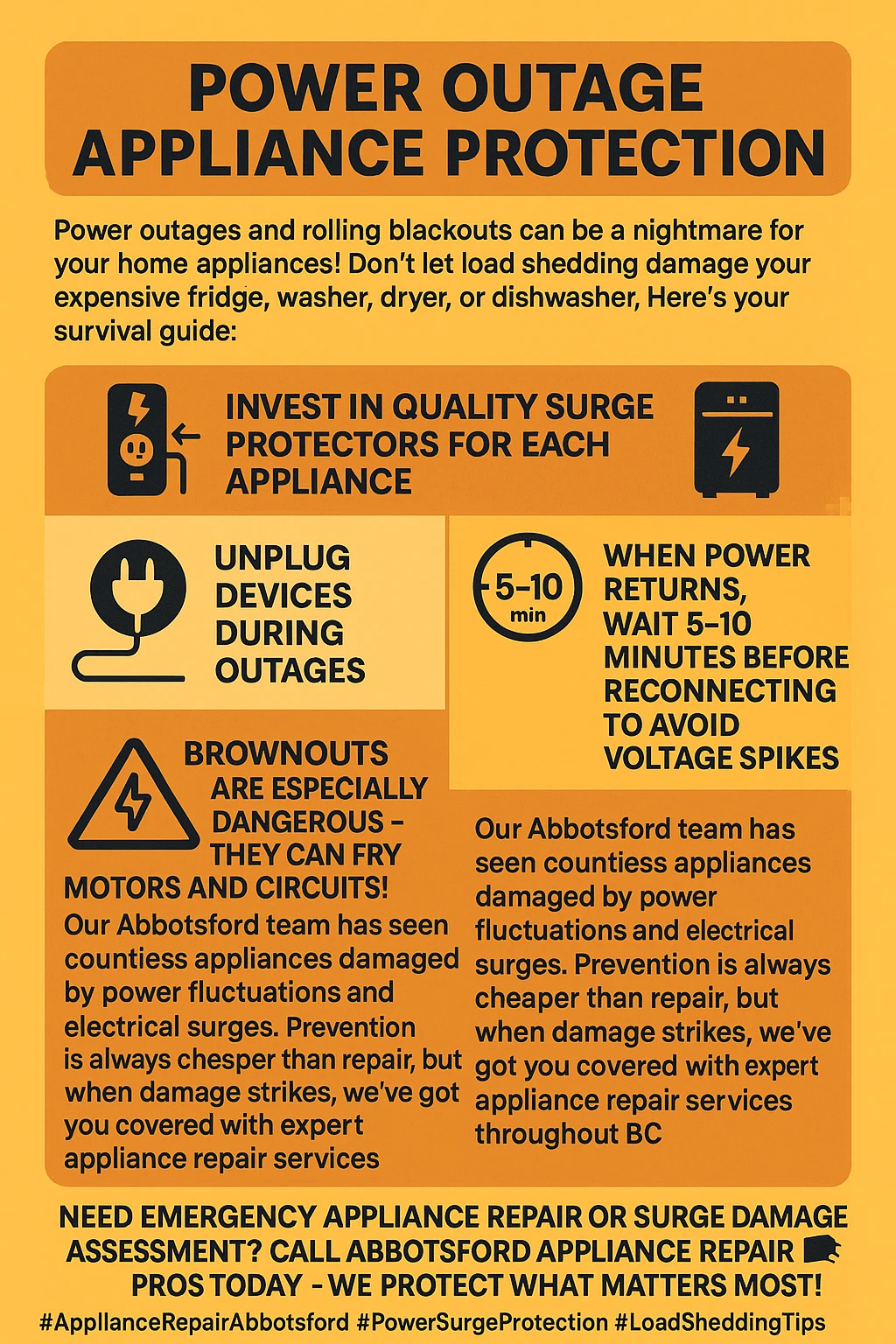
Understanding the Real Threat: Why Power Restoration is More Dangerous Than Outages
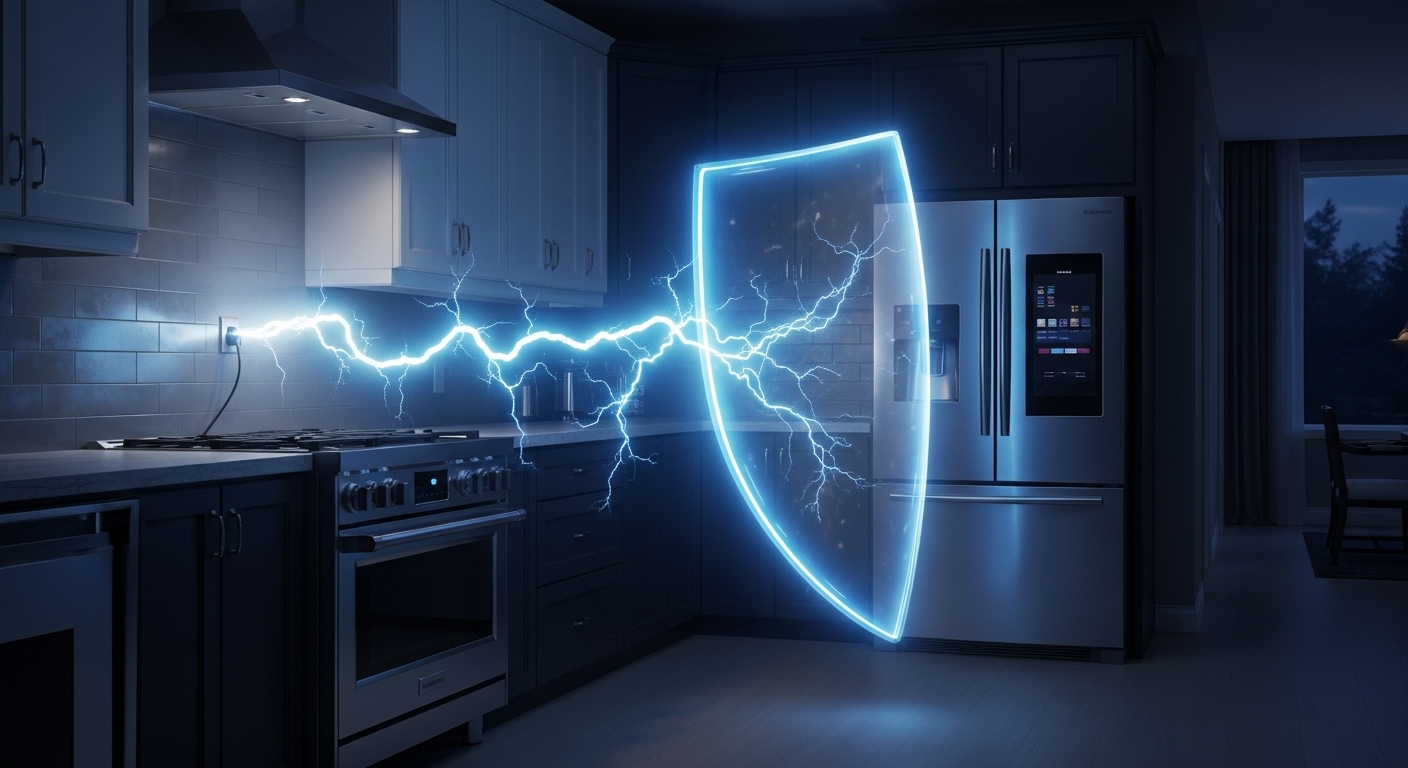
Let’s get real about what actually happens when your neighborhood loses power during rolling blackouts or emergency grid shutdowns. Most Abbotsford homeowners think the biggest risk is food spoiling in the fridge or missing their favorite TV shows. But the electrical reality is way scarier than temporary inconvenience. When BC Hydro cuts power to manage grid stability or prevent cascading failures, they’re not just turning off individual homes – they’re disconnecting entire distribution circuits that serve hundreds of properties simultaneously.
Here’s where things get dangerous. When utility operators restore power to these massive circuits, they’re essentially forcing thousands of volts back into a system that’s been sitting dormant. This creates what electrical engineers call “inrush current” – basically an electrical tidal wave that crashes through neighborhood power lines and into every home on the circuit. Your standard residential power operates at 120 volts for regular outlets and 240 volts for big appliances like dryers and stoves. But during power restoration, voltage can spike to 300+ volts for microseconds, which is enough to permanently damage sensitive electronics that weren’t designed to handle those levels.
The physics behind this destruction involves understanding how modern appliances actually work. Unlike the simple electromechanical devices your grandparents owned, today’s appliances are basically computers with motors attached. Your refrigerator has sophisticated temperature sensors and digital control boards. Your dishwasher runs complex wash cycles controlled by microprocessors. Even your water heater probably has electronic temperature regulation and safety systems. All of these digital components expect clean, stable electricity – not the electrical chaos that happens during grid restoration.
What makes surge damage particularly sneaky is that it doesn’t always announce itself dramatically. Sometimes your appliances keep working after a surge event, but internal components have been weakened or partially damaged. This creates a slow-motion failure scenario where appliances gradually perform worse over weeks or months before finally giving up completely. Many homeowners never connect these later failures to that “harmless” power outage from months earlier, instead just assuming their appliances wore out from normal use.
BC Hydro’s own data reveals why Abbotsford faces unique challenges in this regard. The utility manages three times more trees per kilometer of power line than any other North American electric company, and more than half of all outages result from vegetation falling on distribution lines during storms. This means not only do outages happen more frequently, but restoration attempts often involve multiple switching operations as crews try to isolate damaged sections and reroute power. Each switching operation creates another opportunity for voltage spikes to damage home appliances throughout the affected service area.
Appliance-Specific Vulnerabilities: What Gets Hit Hardest
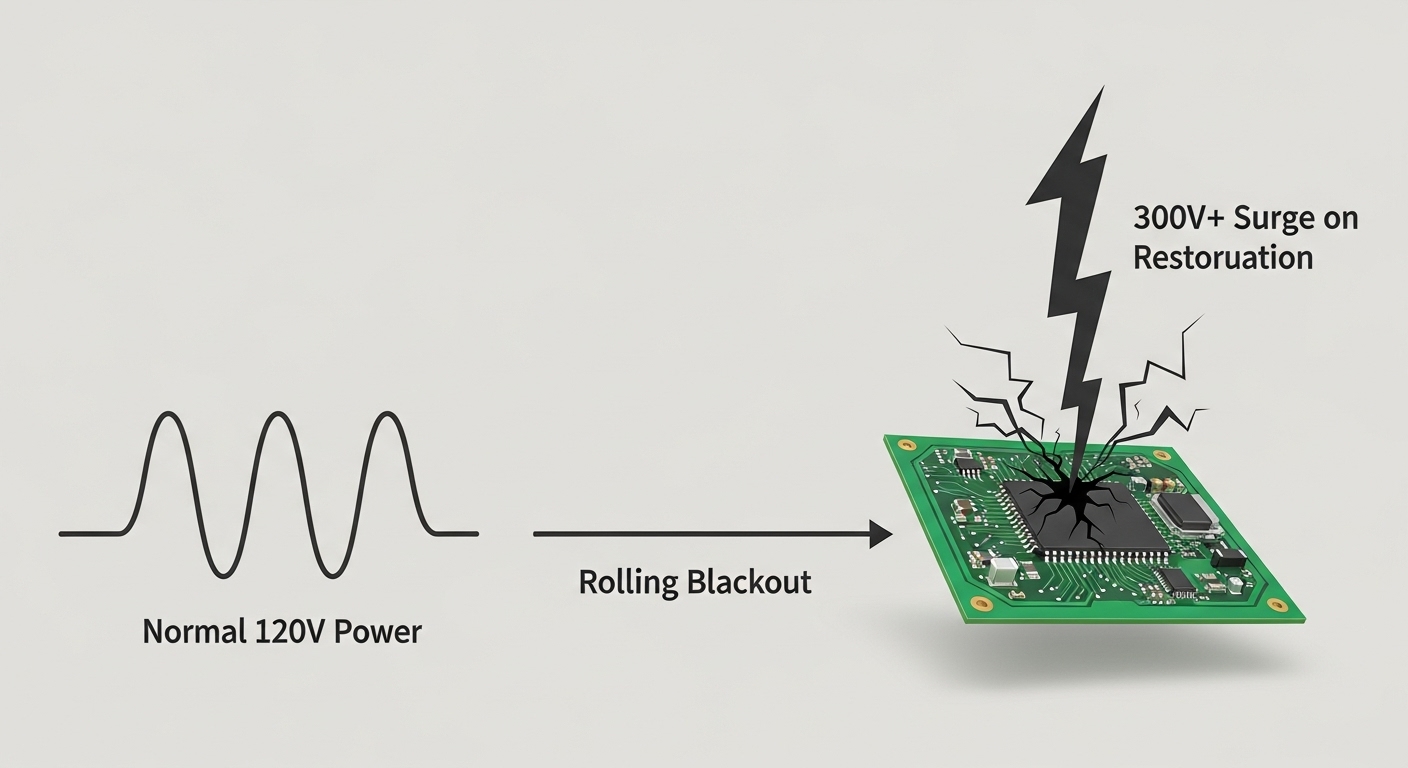
Now that we understand why power restoration creates surge risks, let’s talk about which appliances in your Abbotsford home are most vulnerable and why. The pattern isn’t what most homeowners expect – it’s not necessarily the most expensive appliances that get damaged first, but rather the ones with the most sophisticated electronic controls and the least robust surge protection.
Kitchen appliances represent ground zero for surge damage because they combine expensive electronics with everyday necessity. Modern refrigerators are particularly vulnerable because they pack sensitive temperature sensors, digital display panels, and variable-speed compressor controls into a single unit that typically costs $1,500-3,000 to replace. The electronic control boards that manage cooling cycles can fry instantly when exposed to voltage spikes, leaving you with a dead fridge and hundreds of dollars worth of spoiled food. Even worse, refrigerator surge damage often isn’t immediately obvious – the unit might continue running but fail to maintain proper temperatures, creating food safety hazards that homeowners don’t notice for days or weeks.
Dishwashers face similar vulnerabilities because modern units depend entirely on electronic cycle controllers to manage water temperature, wash duration, and drainage timing. A single surge event can destroy these control systems, leaving you with a dishwasher that fills with water but won’t complete wash cycles. Repair costs typically run $200-500, which approaches half the replacement cost of mid-range units. Ranges and cooktops with digital displays, electronic ignition systems, and induction heating technology are equally susceptible, with replacement costs ranging from $800-2,500 depending on features.
What many homeowners overlook is that surge damage extends beyond obvious electronics to include hardwired systems throughout the home. Electric water heaters contain sophisticated temperature regulation and safety systems that voltage spikes can compromise. HVAC systems integrate electronic thermostats, variable-speed blower motors, and digital control boards that manage complex heating and cooling sequences. Even garage door openers and security systems can suffer surge damage that affects functionality or creates safety hazards.
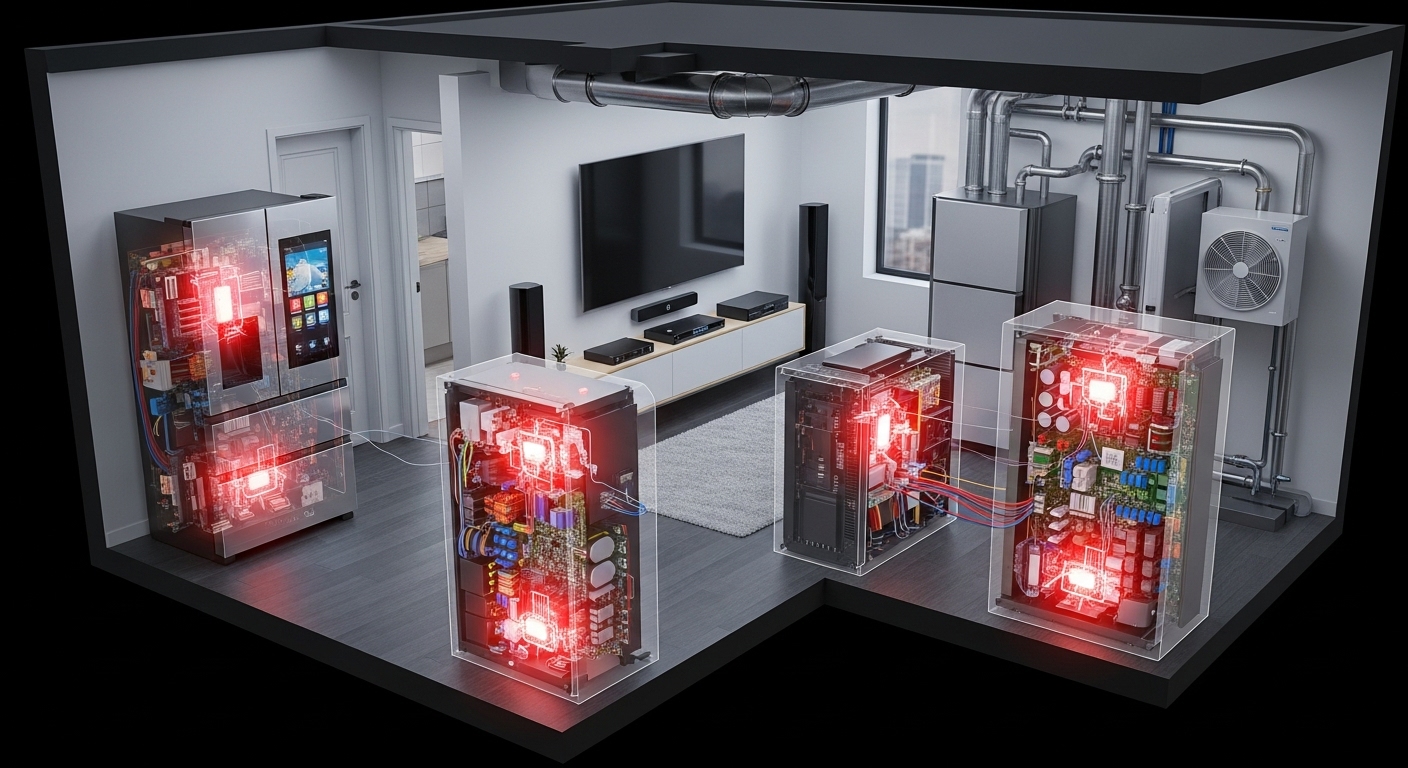
Smart home devices and Internet-connected appliances face particularly complex vulnerability patterns. Unlike traditional appliances that either work or don’t after surge exposure, smart devices can suffer partial damage that corrupts firmware, erases configuration data, or disrupts network connectivity. A smart thermostat might continue displaying information but lose its programmed schedules. A connected refrigerator might maintain cooling but lose internet features that manage energy efficiency or send alerts about maintenance needs. This type of damage creates frustrating reliability issues that are difficult to troubleshoot and expensive to repair.
The financial implications add up quickly when you consider that most homes contain $15,000-25,000 worth of surge-sensitive appliances and electronics. A single major surge event during power restoration can damage multiple appliances simultaneously, creating repair or replacement costs that can easily reach $5,000-8,000. For many Abbotsford homeowners, this represents a significant unexpected expense that homeowners insurance may not fully cover, making prevention through proper surge protection both economically wise and practically essential.
